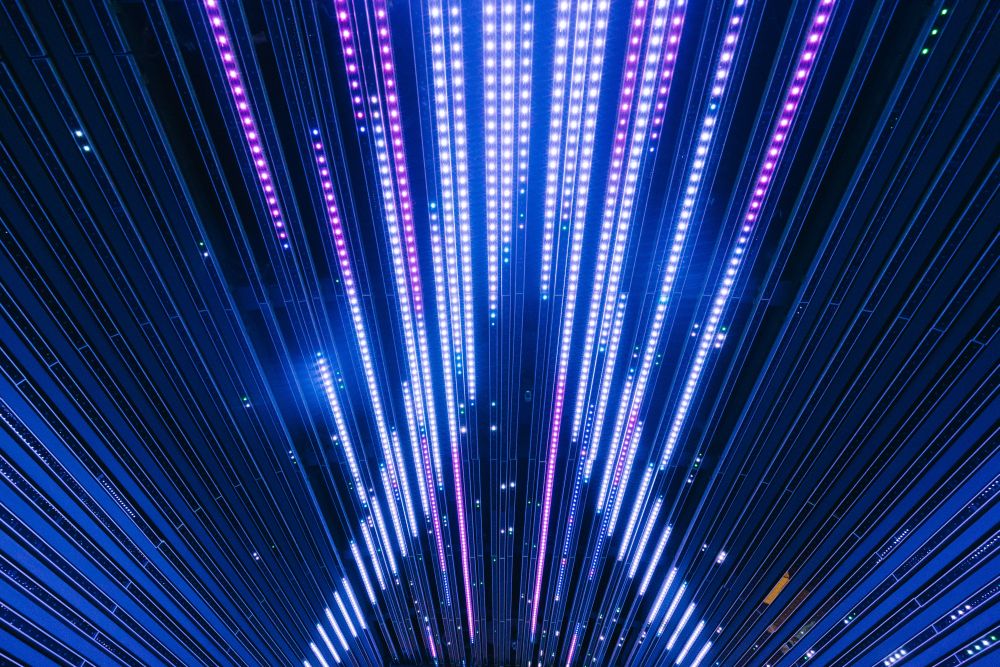In the realm of lighting technology, the advent of Light Emitting Diodes (LEDs) has revolutionized how we illuminate our world. Among the various advancements, the emergence of Alternating Current (AC) LEDs stands out as a significant milestone, promising greater efficiency, versatility, and sustainability in lighting solutions.
Traditional LEDs operate on Direct Current (DC) power, which necessitates the use of additional components such as rectifiers and drivers to convert Alternating Current (AC) from the power grid into the required DC voltage. This conversion process adds complexity, cost, and potential points of failure to LED lighting systems. However, AC LEDs, sometimes referred to as direct AC LEDs or driverless LEDs, bypass the need for these additional components by directly utilizing AC power.
Evolution of AC LED Technology
- Simplified Design: AC LEDs integrate the diode and the AC drive circuit into a single package, eliminating the need for external driver circuits. This streamlined design reduces manufacturing costs and enhances reliability by minimizing points of failure.
- Improved Efficiency: AC LEDs leverage advancements in semiconductor technology and power electronics to achieve higher efficiency levels. By eliminating the energy losses associated with external drivers, AC LEDs can deliver more lumens per watt, translating to energy savings and reduced electricity bills for consumers.
- Enhanced Compatibility: AC LEDs are inherently compatible with standard AC power grids, simplifying installation and retrofitting processes. This compatibility facilitates seamless integration into existing infrastructure, making AC LEDs an attractive option for residential, commercial, and industrial lighting applications.
- Dimming Capabilities: Modern AC LED solutions often incorporate dimming capabilities, allowing users to adjust brightness levels according to preference or ambient conditions. This flexibility enhances user experience and enables further energy savings by optimizing light output based on specific requirements.
- Extended Lifespan: The simplified design and reduced component count of AC LEDs contribute to their longevity. With fewer components prone to failure, AC LEDs boast extended lifespans compared to traditional LED systems, reducing maintenance requirements and lifecycle costs.
Applications and Benefits
- Residential Lighting: AC LEDs offer homeowners energy-efficient lighting solutions that are easy to install and maintain. From ambient lighting to task lighting, AC LEDs provide versatility and aesthetics while minimizing energy consumption.
- Commercial and Industrial Lighting: In commercial and industrial settings, where lighting plays a crucial role in productivity and safety, AC LEDs offer a reliable and cost-effective lighting solution. Whether illuminating office spaces, warehouses, or manufacturing facilities, AC LEDs provide bright, consistent light with minimal power consumption.
- Outdoor Lighting: AC LEDs are well-suited for outdoor applications such as street lighting, parking lots, and architectural illumination. Their durability, efficiency, and ability to withstand harsh environmental conditions make them an ideal choice for outdoor lighting installations.
Environmental Impact
The environmental benefits of AC LEDs extend beyond energy efficiency. By consuming less electricity and having longer lifespans, AC LEDs reduce carbon emissions and contribute to sustainability efforts. Additionally, the absence of hazardous materials such as mercury, commonly found in traditional lighting sources like fluorescent lamps, makes AC LEDs environmentally friendly from production to disposal.
Conclusion
As the demand for energy-efficient lighting solutions continues to grow, AC LEDs have emerged as a compelling option for consumers, businesses, and municipalities alike. With their simplified design, improved efficiency, and versatility, AC LEDs are poised to shape the future of lighting technology, illuminating our world while reducing energy consumption and environmental impact. As we embrace the evolution of lighting technology, AC LEDs stand as a shining example of innovation driving progress towards a brighter, more sustainable future.

